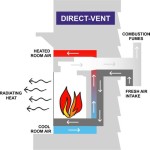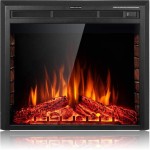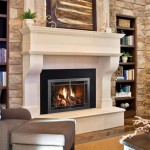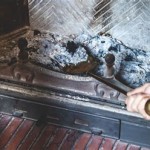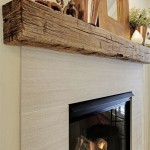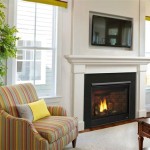Understanding Black Soot Buildup in Gas Fireplaces
Gas fireplaces offer a convenient and often aesthetically pleasing alternative to traditional wood-burning fireplaces. They provide warmth and ambiance with the flick of a switch, eliminating the need for wood storage and the mess associated with ash and embers. However, even with their ease of use, gas fireplaces are not completely maintenance-free. One common issue that homeowners may encounter is the formation of black soot, a dark, powdery residue that accumulates on the fireplace glass, logs, and surrounding surfaces. Understanding the causes of black soot buildup and implementing preventive measures are crucial for maintaining the efficiency, safety, and visual appeal of a gas fireplace.
Black soot, in the context of gas fireplaces, is primarily composed of uncombusted carbon particles. This residue is a byproduct of incomplete combustion, a process where the fuel, in this case, natural gas or propane, does not burn completely due to insufficient oxygen or other combustion inefficiencies. The resulting carbon particles, which are black in color, are then deposited throughout the fireplace system.
The presence of black soot is not merely a cosmetic concern. Significant soot accumulation can hinder the performance of the fireplace by affecting its heating efficiency and potentially leading to safety hazards. A thick layer of soot on the glass can obscure the flames, reducing the radiant heat output and diminishing the aesthetic appeal of the fireplace. Furthermore, excessive soot buildup can indicate a more serious underlying problem that requires professional attention.
Key Point 1: Causes of Incomplete Combustion and Soot Formation
Several factors can contribute to incomplete combustion in a gas fireplace, leading to the formation of black soot. Identifying these causes is the first step towards addressing the problem effectively.
Insufficient Air Supply: Proper combustion requires an adequate supply of oxygen. Gas fireplaces are designed with specific air intakes to ensure the proper air-to-fuel ratio. If these air intakes are blocked or obstructed, the fireplace may not receive enough oxygen, resulting in incomplete combustion and the production of soot. Common obstructions include dust, debris, pet hair, and even accidental blockages caused by furniture or other objects placed too close to the fireplace.
Improper Gas Pressure: The gas pressure supplied to the fireplace must be within the manufacturer's specified range. If the gas pressure is too low, the gas may not mix properly with the available air, leading to incomplete combustion. Conversely, excessively high gas pressure can result in over-fueling the flame, also contributing to soot formation. Gas pressure regulation is typically handled by a gas regulator installed within the fireplace system.
Dirty Burners: Gas fireplace burners are designed with small orifices or ports that allow the gas to flow and mix with air. Over time, these orifices can become clogged with dust, debris, or corrosion. Clogged burners disrupt the flow of gas, leading to uneven or incomplete combustion. Regular burner cleaning is essential for maintaining optimal fireplace performance.
Incorrect Log Placement: Gas fireplace logs are not merely decorative; they are strategically placed to ensure proper flame distribution and airflow. Incorrect log placement can impede airflow, causing incomplete combustion and soot buildup. Refer to the manufacturer's instructions for the correct log arrangement.
Ventilation Issues: Proper ventilation is crucial for the safe and efficient operation of a gas fireplace. Vented fireplaces rely on a chimney or vent system to exhaust combustion byproducts, including carbon monoxide and soot. If the vent is blocked or obstructed, these byproducts can back up into the room, posing a health hazard and contributing to soot accumulation within the fireplace itself. Ventless fireplaces, while designed to operate without a vent, still require adequate ventilation within the room to prevent the buildup of harmful gases.
Key Point 2: Detecting and Identifying Soot Buildup
Recognizing the signs of soot buildup is essential for timely intervention and preventing further damage. Regular visual inspections of the fireplace can help detect early signs of soot accumulation.
Visual Inspection: The most obvious sign of soot buildup is the presence of black, powdery residue on the fireplace glass, logs, or surrounding surfaces. Pay close attention to areas near the burners and vents, as these are typically the areas where soot tends to accumulate first.
Flame Appearance: A healthy gas fireplace flame should be blue or bluish-yellow. If the flames are predominantly yellow, orange, or smoky, this indicates incomplete combustion and the presence of soot. The color change is due to the unburned carbon particles being heated to incandescence.
Odor: A slight natural gas or propane odor is normal when the fireplace is first turned on. However, a strong or persistent odor, especially accompanied by other signs of soot buildup, could indicate a problem with the gas supply or ventilation. Immediately shut off the fireplace and contact a qualified technician if a strong gas odor is detected.
Carbon Monoxide Detection: Carbon monoxide (CO) is a colorless, odorless, and highly poisonous gas produced by incomplete combustion. Installing a carbon monoxide detector near the fireplace is crucial for safety. If the CO detector alarms, immediately evacuate the premises and contact emergency services.
Key Point 3: Preventive Maintenance and Cleaning Procedures
Regular maintenance and cleaning are essential for preventing soot buildup and ensuring the safe and efficient operation of a gas fireplace. Following the manufacturer's recommended maintenance schedule is crucial.
Regular Cleaning: Clean the fireplace glass regularly using a specialized fireplace glass cleaner. Avoid using abrasive cleaners, as these can scratch the glass. Use a soft cloth or sponge to wipe away the soot residue. Vacuum the fireplace interior, including the burners and log set, to remove dust and debris. Use a soft brush attachment to avoid damaging the components.
Burner Inspection and Cleaning: Inspect the burners regularly for clogs or obstructions. Use a small wire or needle to carefully clear any blockages in the burner orifices. Be careful not to damage the orifices during cleaning. If the burners are heavily corroded or damaged, they may need to be replaced.
Vent Inspection: Inspect the vent or chimney regularly for obstructions, such as bird nests or debris. Clear any blockages to ensure proper ventilation. A professional chimney sweep can inspect and clean the vent system thoroughly.
Professional Servicing: Schedule annual servicing by a qualified gas fireplace technician. A technician can perform a thorough inspection of the fireplace system, including the gas connections, burners, vent, and control system. They can also identify and address any potential problems before they lead to more serious issues.
Log Placement: Ensure that the logs are placed correctly according to the manufacturer's instructions. Incorrect log placement can impede airflow and contribute to soot buildup. Refer to the fireplace manual for the proper log arrangement diagram.
Air Intake Maintenance: Regularly inspect and clean the air intakes to ensure proper airflow. Remove any dust, debris, or obstructions that may be blocking the intakes. Ensure that furniture or other objects are not blocking the air intakes.
Addressing black soot buildup in a gas fireplace requires a proactive approach that includes understanding the causes, recognizing the signs, and implementing preventive maintenance measures. Regular cleaning, burner inspection, vent maintenance, and professional servicing are all crucial for maintaining the efficiency, safety, and aesthetic appeal of the appliance. Failure to address soot buildup can lead to reduced heating efficiency, potential safety hazards, and costly repairs. By following these guidelines, homeowners can enjoy the warmth and ambiance of their gas fireplaces for years to come.

Excess Soot Turning Gas Fireplace Logs Black

6 Reasons Why Is My Gas Fireplace Leaving Black Soot

Is Black Soot From Gas Fireplace Dangerous Shepherd S

Why Does My Fireplace Have Black Glass Pros In Richmond

Chimney Soot And Creosote Dangers Full Service

Is Black Soot From Gas Fireplace Dangerous All Coast Inspections

Gas Logs Vented Or Not General Inspection Discussion Internachi Forum

Is Black Soot From Gas Fireplace Dangerous All Coast Inspections

What Causes Black Soot Buildup On My Gas Fireplace Logs

Wednesdaywisdom What Causes Black Soot From A Propane Burner


